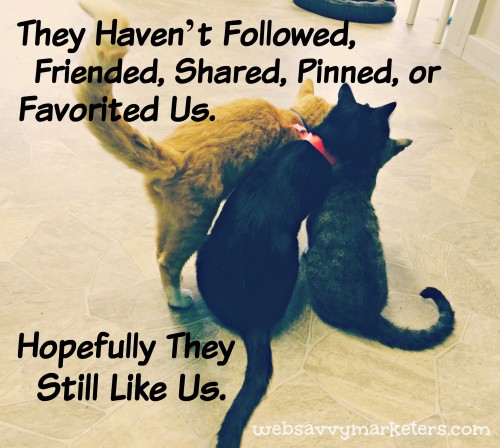 Social media feels like a gift from the internet gods whether you’re on a tight budget or not. As a small company, you want to maximize creative and low-cost (or free) methods for promoting your business, but social media has you feeling overwhelmed.
Social media feels like a gift from the internet gods whether you’re on a tight budget or not. As a small company, you want to maximize creative and low-cost (or free) methods for promoting your business, but social media has you feeling overwhelmed.
Using social media to build your brand involves many options, and in order to optimize the various platforms, you have to dig deeper to discover what will work for you. Here are a few social media mistakes I found when digging that reflect small business needs.
1. Not using Google Analytics to measure and track your efforts
If you want data on your website’s visitors, Google Analytics gives you a ton of information. It also gives you eight reports created specifically for measuring your social media activity.
Here’s the basics for keeping track of your social media ROI, but check out Hootsuite’s article for the in-depth how-to.
- Overview report at a glance for conversion value.
- Network referral report for traffic from various social networks.
- Data Hub activity report for details on your site’s engagement, what URLs are shared and how, and what was said.
- Landing pages report shows you the engagement metrics for each URL.
- Trackbacks tell you which sites are linking to you.
- Conversions reports the number of conversions and their monetary value from your referrals.
- Plugins is a report for your site’s social share buttons, telling you which have been clicked on and for what content.
- Users Flow shows you what paths your social media visitors took on your site.
2. Not removing the URL from a Facebook post
How many times have you seen this done? When you want to post an update with a link in Facebook, you have to paste the link to share it and to create a clickable image. Leaving the URL at the top of your post just looks like you don’t know what you’re doing.
It’s a tiny mistake that carries a glaring message. Make sure you delete that extra bit of unnecessary information and keep your newsfeed looking professional.
3. Posting without images
Guy Kawasaki, one-time chief evangelist for Apple who now works for Canva, an online graphic design and editing tool, figured out a way to double his engagement on Twitter. For his tweets, Kawasaki says, “There’s no doubt in my mind that every post needs a graphic—and not a tiny thumbnail, but one that’s optimized for each service.”
Canva is his go-to graphic tool, allowing him to create images quick and easy. Try it, it’s free, and it’s designed to work with your social media posts.
Tweets with images take up more space in the twitter feed, grab more attention, and drive engagement up 200 percent. What’s not to like about that?
Facebook is another image-loving platform. Since 40 percent of users respond better to visuals than plain text, according to Zabisco, this is a no-brainer. While you’re busy uploading images onto Facebook, be sure you’re using the right sizes. Follow what Facebook recommends for pixels to give your photos their best quality.
4. Not taking advantage of hashtags
Both Twitter and Instagram are hashtag-loving social media platforms, making it a great way for your business to get involved in the conversation. There are many to choose from that are widely used and recognized.
To find popular hashtags, check out your Twitter home page under trends in the left column, or try a free version of Trendsmap to see localized trends and get ideas. You can search on Twitter using topic keywords and hashtags on anything relevant to your company, or use current events that you’re interested in.
On Instagram, hashtags are unlimited and therefore prone to overuse. Twitter doesn’t suffer from this issue due to its 140 character limit, but Instagram knows no such restrictions.
Just be sure to use hashtags that directly apply to your business when you attempt to get involved in the conversation. Spam is not something users want to see when they filter through their posts.
5. Talking too much and listening too little
Social media is all about giving your followers a forum for feedback and sharing. It’s a place where users can benefit from social relationships — both individuals and companies. But instead what we are seeing is the same thing that happens in real-time interactions.
Ted Rubin, social marketing strategist and keynote speaker, has had enough. In his new book How To Look People In the Eye Digitally, Rubin discusses how we can fix this problem by applying people skills to the digital world. In an interview for his book, he says the first and foremost skill is to be “‘present’ when you’re talking to someone.”
In face-to-face situations, this isn’t happening when you’re constantly distracted with checking your phone or other people in the room. Online it involves different signals, but the same disconnect happens when you don’t treat your social media followers with the gift of being present.
Social media works best for building your brand, not for directly making new customers. But done right, you can build relationships that can develop into new clients.